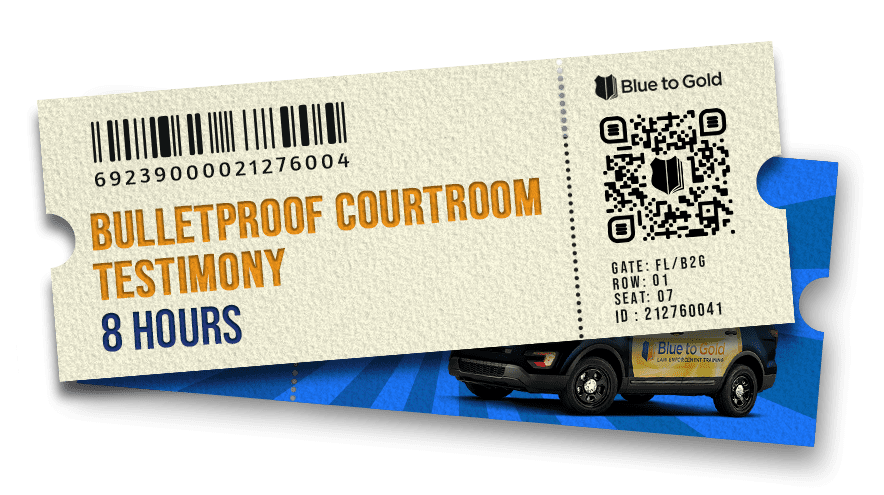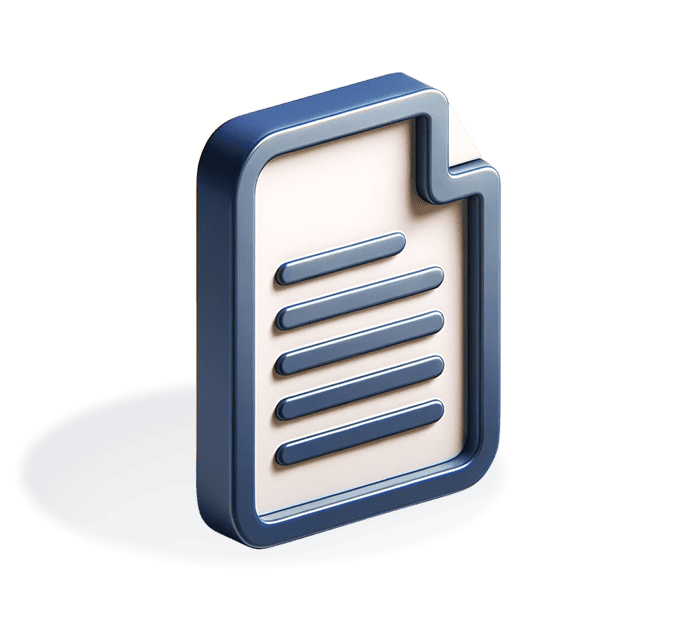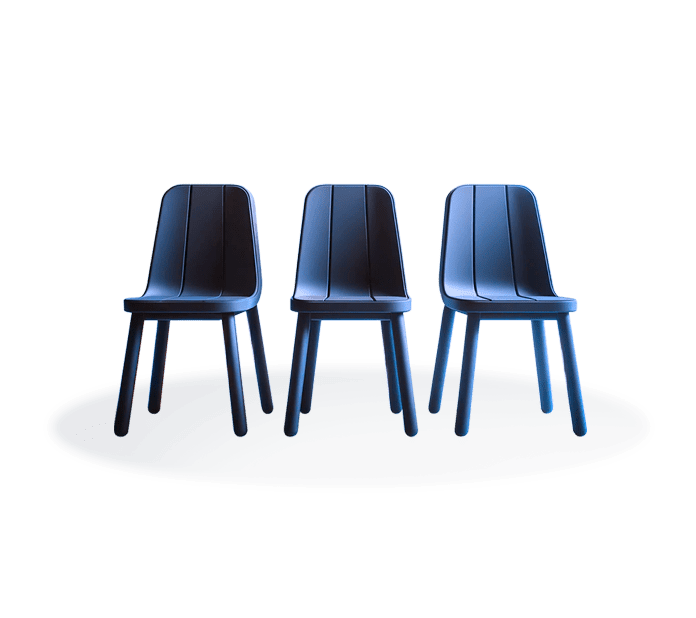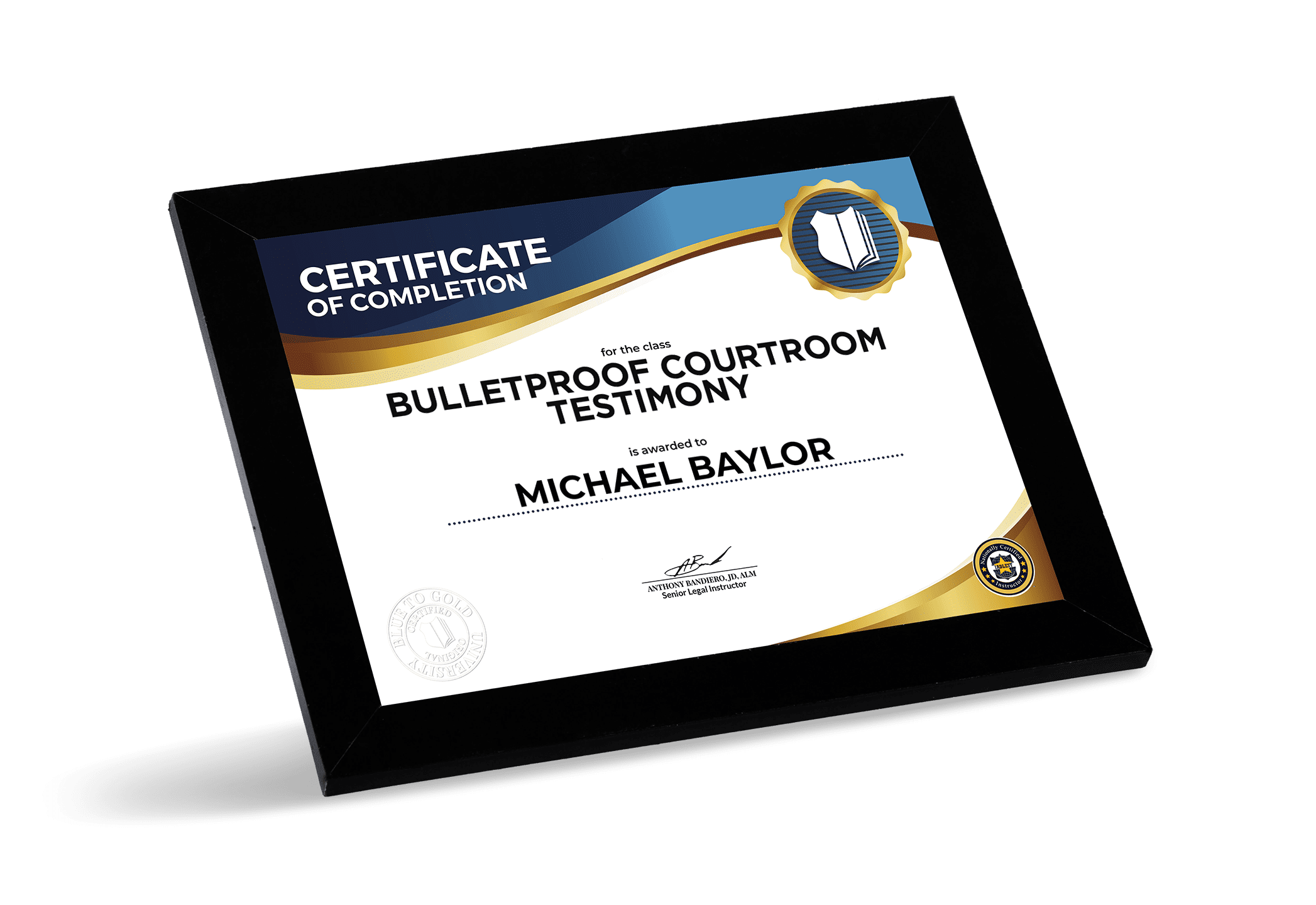Course Introduction – 10 Minutes
Explain the course objective.
- Breakdown what evidence is admissible in court.
- Distinguish between the three main types of evidence.
- Respond to attorney’s questions on the stand.
- Explain the difference between the prosecutor’s theory and the defense’s theory of what took place.
- How to interpret the Defense Attorney’s questions.
3) Encourage attendees to ask questions and share feedback with other attendees.
4) Explain that certificates will be emailed after the class and each student will be registered in the Blue to Gold University.
5) Go over the three disclaimers:
- Laws and agency standard operating procedures may be more restrictive. Blue to Gold teaching the federal standard unless otherwise stated. Therefore, students must know their state and local requirements in addition to the federal standard.
- If students have any doubts about their actions, ask a supervisor or legal advisor.
- The course is not legal advice, but legal education. Therefore, nothing we teach should be interpreted as legal advice. Check with your agency’s legal advisor for legal advice.
Module 1: Overview
An Officer’s Objective when Testifying
Three Golden Rules of Testifying
- Be Professional
- Be Confident
- Be Impartial
Courtroom Survival
- Is It Easy for an Officer to Testify?
- Call to the Stand: Marshall SH
- Pro Tip
- Takeaway
Module 2: Fundamentals
- A Brief History of Trials
- Brady
- Burdens of Proof
-
- Probable Cause
- Preponderance of Evidence
- Clear and Convincing Evidence
- Minimum Level of Proof
- How a Case is Presented for Conviction
Module Three: Types of Proceedings
- The Trial
- Trial Procedure
- Jury Selection
- Opening Statements
- Witness Examinations
- Direct Examination
- Cross Examination
- Redirect Examination
Admission of Evidence
- The Three Main Types of Evidence
- Direct
- Circumstantial
- Demonstrative
- Evidence Courts Permit
- Admissible Evidence
- Relevant Evidence
- More Probative than Prejudicial
- Authenticated
- Prosecutor’s Role in a Criminal Trial
- DMV Hearings and Criminal Hearings
- Difference between DMV and Criminal Hearings
Defense Main Tactics
-
- Your Opinions
- FST Procedures
- Test the Waters
Focus of DMV Hearings
DUI/DWI Misdemeanor Trials
Module Four: Preparing to Testify
- How You Know You Have a Court Hearing
- What to Review Prior to Hearing
- Reports
- Body Worn Cameras
- Diagrams/Maps/Crime Scene Photos
- Prior Testimony
- Pre-Trial Conference
- Do You Know the Law
- Elements of Actual Charges
- Possession of Instrument with Burglarious Intent
- Objections and Responses
- Overruled
- Sustained
- Rephrase
- Does not Compute
- Types of Objections
- How to Appear
- What to Wear
- Walking Into Court
Module 5: How to Testify
- Don’t Be Weird – Mood will Influence Testimony
- Smile
- Show humanity
- Appear interested
- Speak loudly, but at a normal pace
- Use natural pauses
- Behavior on the Stand
- Don’t be Nervous
- Eye Contact
- Church Hands
- Treat Everyone the Same
- Don’t be a “Snark Shark”
- Dealing with the Negative
- Dealing with the Naughty
- How to Answer Questions
- Department Policy
Module Six: Defense Tactics
- Conviction Requirement
- The Defense Attorney’s Job
- Get you angry
- Rattle you
- Throw you off
- Embarrass you
- Confuse you
- Poke holes in your investigation
- Common Traps
- Answer Train
- Repetitive Questions
- If you said that, it will be on BWC
- Summarizing Testimony
- Slow Crawl to Make a Point
- Types of Question by the Defense
- Defense Theory of the Case
- Wasn’t me
- I was framed
- Cops suck. Your investigation was incomplete/incompetent.
- CSI Defense
- Confuse first, figure it out later
- Kitchen Sink or Spaghetti Defense
Module Seven: Suppression Hearings, the Fourth Amendment, and your Credibility
- Trials
- Suppression Hearings
- Subjective and Objective Intent
- Change the Facts, Change the Answer
- Takeaway














